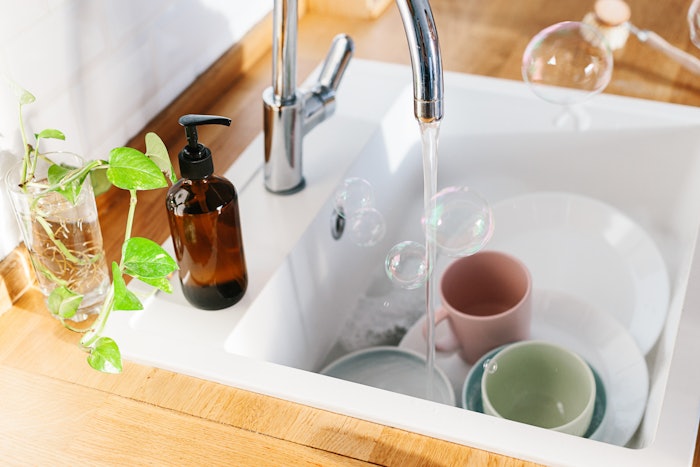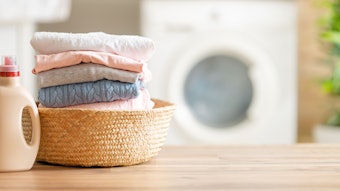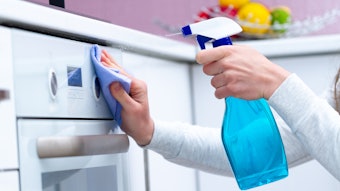
Consumer expectations for home care and cleaning products have shifted Sogyel Lhungay, vice president, Insights, YogiCourtesy of Yogi
Sogyel Lhungay, vice president, Insights, YogiCourtesy of Yogi
This article is only available to registered users.
Log In to View the Full Article
Consumer expectations for home care and cleaning products have shifted Sogyel Lhungay, vice president, Insights, YogiCourtesy of Yogi
Sogyel Lhungay, vice president, Insights, YogiCourtesy of Yogi
Analysis of hundreds of thousands of consumer reviews across categories such as dish soap, all-purpose cleaners, laundry detergents and home fragrance products reveals four dominant cross-cutting trends: biophilic authenticity, sensorial escapism, dynamic fragrance experiences and personalization. Collectively, these preferences highlight a fundamental transformation: consumers increasingly want their home care products to feel authentic, emotionally rewarding, technologically advanced and personally adaptable.
Biophilic Authenticity: A Mainstream Expectation
Consumers are no longer satisfied with generic “fresh” or “clean” scents. Instead, they look for fragrances that feel connected to nature. In dish soap and all-purpose cleaners, advanced plant-based fragrance technologies have gained significant traction. Innovations that mimic compounds emitted by trees and plants create what reviewers describe as a sense of “bringing the outdoors in.”
Data shows strong positive sentiment toward products marketed with biophilic authenticity, such as those formulated with plant-derived scent molecules. Citrus-herbal blends like Yuzu Basil or Clementine Zest & Lemongrass scored far higher with consumers than synthetic florals, which often attracted sharp criticism. One reviewer even described a reformulated floral scent in a mainstream product as “cloying” and “overpowering,” underlining the risks when brands move away from authentic-feeling profiles. The lesson for formulators is clear: nature-identical fragrance molecules that balance authenticity with performance are now table stakes. What was once a niche demand is firmly in the mainstream, and skepticism grows quickly when “natural” claims feel overstated or inauthentic.
Sensorial Escapism: Turning Chores Into Experiences
Another emerging driver is the desire for fragrances that transform mundane cleaning tasks into moments of escapism. Reviews of all-purpose cleaners show particularly strong enthusiasm for novel fragrance profiles such as Rain Water or Tomato Vine, which consumers describe as “elevating” and even “transportive.” Similarly, premium dish soap scents like Wild Jasmine and Yuzu Basil are praised for their layered complexity that makes dishwashing feel more enjoyable.
In home fragrance categories, the trend is even more pronounced. Neuroscience-informed formulations, such as calming blends of lavender, sage, or chamomile, are explicitly marketed for emotional benefits like stress relief or focus. Consumers confirm this connection, often describing these scents as creating an atmosphere of relaxation or escape.
This points to a growing expectation: fragrance in household products should do more than mask odors or signal cleanliness; it should deliver psychological benefits. For perfumers, this means that the ability of a scent to evoke calm, joy, or inspiration is as important as its capacity to align with a functional cleaning task.
 In the home fragrance category, consumers tend towards scents that offer an escape from their everyday routine.milkyway at Adobe Stock
In the home fragrance category, consumers tend towards scents that offer an escape from their everyday routine.milkyway at Adobe Stock
Dynamic Experiences: Beyond the First Impression
Static scents are losing ground to fragrance experiences that evolve over time. In home fragrance, this is seen in the popularity of multi-phase products, such as layered candles that release sequential scents as they burn. Consumers describe these as offering “two moods in one jar,” highlighting the appeal of transformation and surprise.
Laundry detergents exemplify this trend through encapsulation technologies and scent-boosting beads that prolong fragrance from wash to wear. Consumer reviews consistently praise long-lasting freshness, with some describing scent beads as “a game-changer” for maintaining fragrance days after laundering.
Even in categories like dish soap and all-purpose cleaners, where technological advances are less visible, layered and complex fragrance compositions mimic the multi-phase appeal found elsewhere. The takeaway is that longevity and evolution matter as much as the initial impression. Controlled-release technologies and layered compositions are key tools for delivering this dynamic consumer experience.
Personalization: Giving Consumers Control
As in many other industries, personalization has become a defining consumer expectation in home care. Shoppers increasingly want control over the intensity, duration, and format of fragrance delivery.
Digitally controlled home fragrance diffusers and plug-ins are clear examples of this shift, allowing users to fine-tune scent levels to match mood or occasion. Laundry products show the same trend in a more analog form: dedicated scent boosters empower consumers to adjust fragrance independently of the detergent base. Meanwhile, seasonal and limited-edition cleaners tap into personalization by offering choice and collectability.
Consumers reward these approaches because they provide a sense of co-creation. Instead of passively accepting a single fragrance profile, shoppers can tailor their sensory environment, making household tasks more enjoyable and personally meaningful.
Cross-Category Insights and Implications
Though each category expresses these trends differently, the underlying consumer demand is remarkably consistent. Dish soaps and cleaners highlight authenticity and escapism, with plant-based innovations and novel scent profiles transforming cleaning rituals. Laundry detergents emphasize longevity and customization, with encapsulation and boosters reshaping expectations of freshness. Home fragrance products lead the way in technological sophistication, with neuroscience-driven scents, multi-phase formulations, and digital controls redefining personalization.
Across categories, one theme dominates: fragrance has moved from a commoditized function to a central driver of innovation and purchase decisions. For perfumers, flavorists, and formulators, this shift means that fragrance development must now be as strategic as performance formulation or packaging design.
From Function to Experience
Consumers increasingly view household and cleaning products not just as functional necessities, but as opportunities to enhance their emotional and sensory environments. The demand for biophilic authenticity, sensorial escapism, dynamic experiences, and personalization reflects a broader cultural shift: people want their homes to be spaces of well-being, identity, and joy.
For the fragrance industry, this presents both challenges and opportunities. The challenge lies in creating aroma molecules that feel genuinely natural, evolve dynamically, and can be tailored to individual preferences. The opportunity lies in redefining the role of fragrance in everyday life, from something that signals “clean” to something that provides comfort, delight, and a deeper connection to the world around us.
In the end, what consumers really want is not just a product that works, but one that feels right, smells authentic, and makes the everyday extraordinary.










